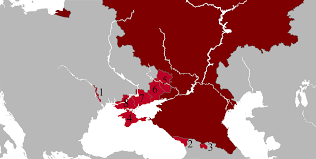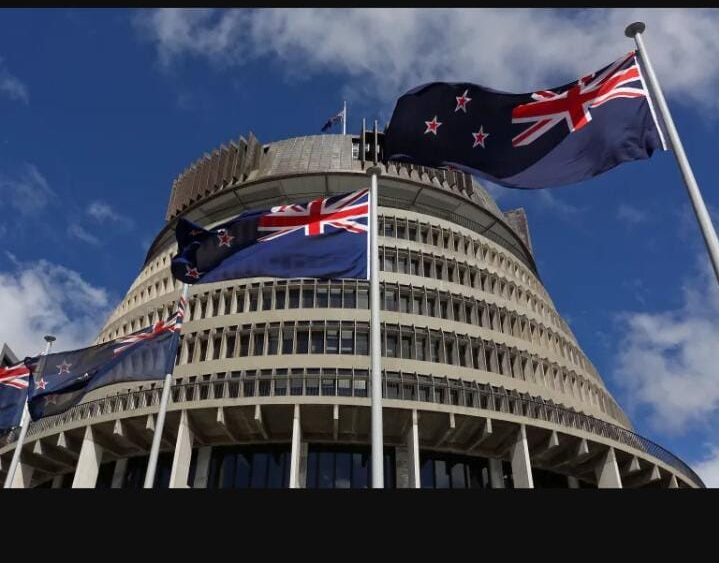
Russia, the largest country in the world, spans both Europe and Asia, covering a massive land area. With a rich history, diverse landscapes, and complex geopolitical positioning, the vast territory of Russia plays a crucial role in global affairs. This article provides an in-depth look at Russian territory, from its geographical makeup to its regional divisions, natural resources, and its political significance on the world stage.
Geography of Russian Territory
Russia covers over 17 million square kilometers, making it the largest country by area. The country extends across 11 time zones, from Eastern Europe to the Pacific Ocean. It is bordered by 14 countries, including China, Mongolia, and Norway, and has maritime borders with countries like Japan and the U.S. (across the Bering Strait).
Major Landforms and Natural Regions
Russia’s geography is marked by a wide range of landforms, including:The Ural Mountains, which divide Europe and Asia.The Siberian Plateau, known for its vast wilderness.The vast plains in European Russia, including the Volga River Basin.The Caucasus Mountains in the southwest, home to the country’s highest peak, Mount Elbrus.Coastal regions like the Arctic Ocean to the north and the Black Sea to the southwest.
Climate Zones
Due to its massive size, Russia has a variety of climate zones:Arctic Climate: Found in the northernmost regions like Siberia.
Subarctic Climate: Characterizes much of northern and central Russia.Temperate Climate: In European Russia, including cities like Moscow and Saint Petersburg.Continental Climate: Found in the heart of Russia, with cold winters and warm summers.Mediterranean Climate: Found along the Black Sea coast.
Natural Resources
Russia is one of the world’s richest countries in terms of natural resources. It has abundant reserves of energy resources, minerals, and timber.
Energy Resources
Russia is a leading global producer of:Oil: Primarily extracted from the Ural-Volga region, Western Siberia, and the Arctic.Natural Gas: Russia is the world’s largest producer, with major fields in Siberia and the Yamal Peninsula.Coal: Deposits found in Siberia, the Far East, and European Russia.
Mineral Resources
Russia is also rich in minerals, with extensive deposits of:Iron ore, copper, and gold, particularly in Siberia and the Ural Mountains.Diamond reserves in the Sakha Republic (Yakutia).Uranium deposits used for both energy and defense purposes.c. Forestry and Water ResourcesRussia’s forests, primarily in Siberia, are known as the “lungs of Europe” due to their carbon absorption. The country also has vast freshwater reserves, including Lake Baikal, the world’s deepest and oldest freshwater lake.
Administrative Divisions
Russia is a federal state composed of multiple regions, each with its own level of autonomy and governance. There are 85 federal subjects, including:Republics: Like Chechnya and Tatarstan, which have a higher degree of autonomy.Oblasts and Krais: Common territorial units, like Moscow Oblast and Krasnoyarsk Krai.Autonomous Okrugs and Federal Cities: Such as Yamalo-Nenets Autonomous Okrug and federal cities like Moscow and St. Petersburg.
Historical Expansion of Russian Territory
Russia’s territory expanded significantly over several centuries. This growth was largely driven by:Medieval Rus’: Russia’s origins trace back to the state of Kievan Rus in the 9th century.Tsardom of Russia: The era of Ivan the Terrible saw the expansion into Siberia.Imperial Russia: The 17th to 19th centuries marked the conquest of Siberia, Central Asia, and the Caucasus.
Soviet Era: After the 1917 Revolution, Russia expanded its influence through the establishment of the USSR, which controlled much of Eastern Europe, Central Asia, and the Caucasus.Post-Soviet Russia: After the collapse of the Soviet Union in 1991, Russia retained much of its former Soviet territory but saw significant political and territorial changes.
Geopolitical Significance of Russian Territory
Russia’s vast territory has always been a key factor in its geopolitical influence. Some notable aspects include:Strategic Location: Russia’s borders with Europe, Asia, and the Arctic give it immense geopolitical power.Arctic Claims: Russia has aggressively asserted its claims over the Arctic, which is believed to contain vast untapped oil and gas reserves.Military Presence: Russia maintains a significant military presence across its vast territory, particularly in the Arctic, the Far East, and along its western borders.Energy Export Power: As a major exporter of oil and gas, Russia holds significant sway in global energy markets, particularly in Europe.
Population and Demographics
Russia’s population, as of 2024, stands at around 146 million. The majority of the population is concentrated in the European part of Russia, particularly around major cities like Moscow and St. Petersburg. Despite its large size, much of Russia, especially Siberia, is sparsely populated due to harsh climatic conditions.
Ethnic Diversity
Russia is home to over 190 ethnic groups. Major ethnicities include:Russians: Making up around 77% of the population.Tatars, Ukrainians, and Bashkirs: Form significant minority populations.Indigenous Peoples: Such as the Yakuts, Nenets, and Chukchi, who inhabit remote regions of Siberia and the Russian Far East
Language and Religion
Russian: The official language, but many regions have their own local languages.Religion: The majority of Russians identify as Orthodox Christians, with Islam being the second-largest religion, particularly in regions like Tatarstan and the North Caucasus.
Challenges Facing Russian Territory
Despite its vast resources, Russia faces numerous challenges in managing its territory, including:Harsh Climate: Large parts of Russia are affected by permafrost and extreme cold, making infrastructure development difficult.Population Decline: Russia has faced population decline due to low birth rates, high mortality rates, and emigration.Political Tensions: Ongoing geopolitical tensions, particularly with the West, have impacted Russia’s economy and international relations.Economic Disparities: Wealth is highly concentrated in urban centers like Moscow and St. Petersburg, while rural and remote regions lag behind in terms of development.
Russia’s immense territory, rich natural resources, and strategic location make it a global powerhouse. However, the country also faces significant challenges in terms of population distribution, infrastructure development, and managing its geopolitical ambitions. As the world’s largest nation, Russia’s territorial and political dynamics will continue to shape its role in international affairs for years to come.
Subscribe to Follow Global Trends for daily global news.
Find Out How To Make Money As A Full Time Writer/Blogger Guide.
To Advertise, Advertise Your Affiliate Links on FollowGlobalTrends.com for Just $1 Per Link Per Month!
Related Articles
Israel’s War on Gaza Live: Israeli Attacks Kill 68 in 24 Hours
Israel’s War on Gaza: Live Updates on Israelis in Cairo as US Says Truce in Sight
Israel’s War on Gaza Live: Truce Still Elusive as Israeli Attacks Kill 52
Brief: Israel War on Gaza Live: No Letup in Israeli Attacks Ahead of Truce Talks
Written by: Enyoghasi Ngozi pricillia
,

